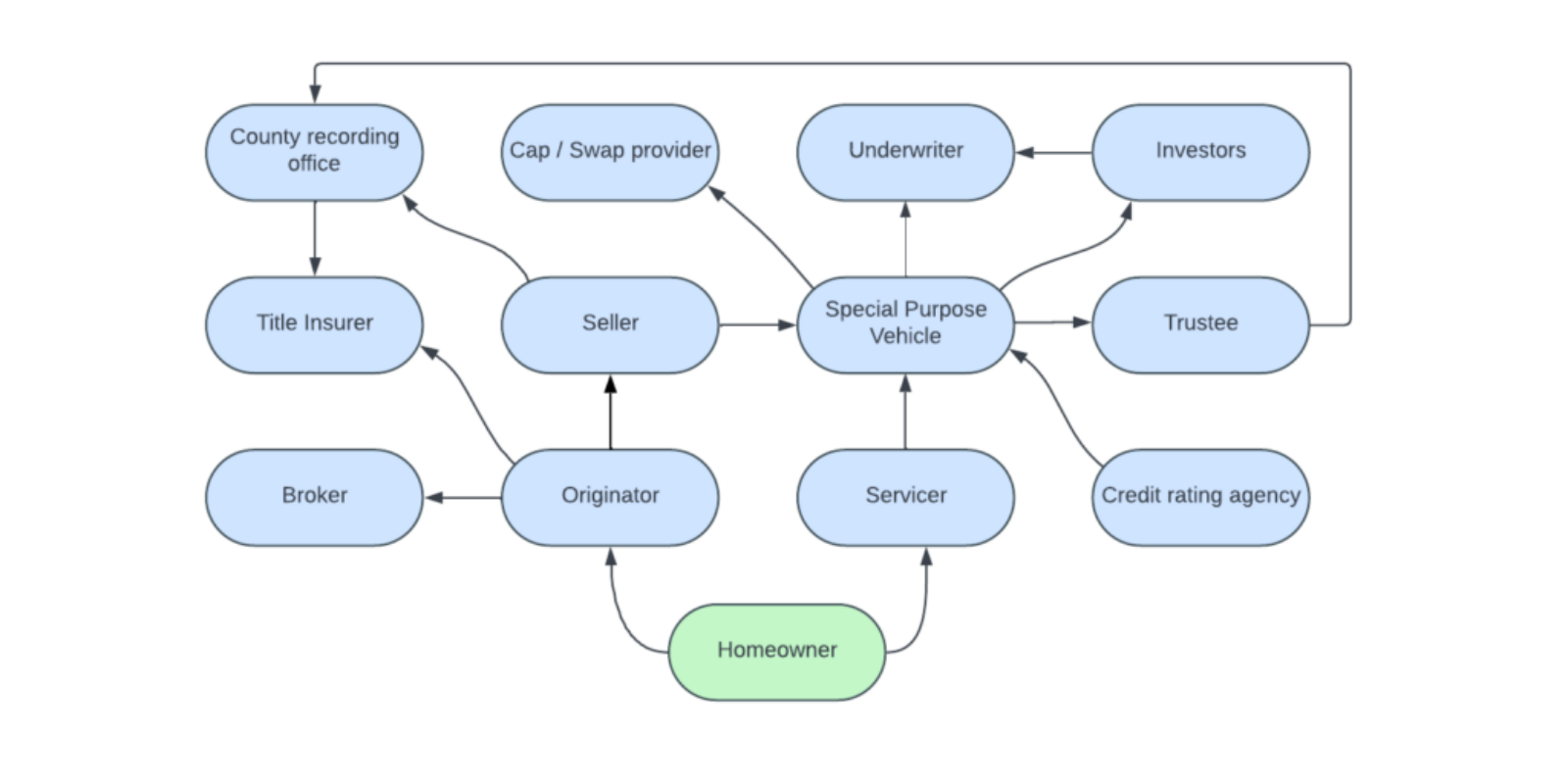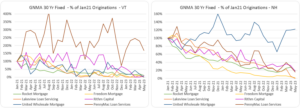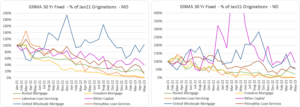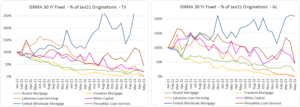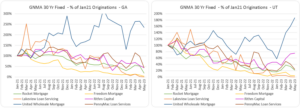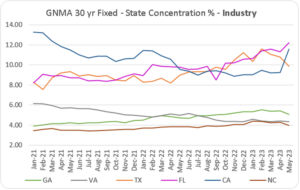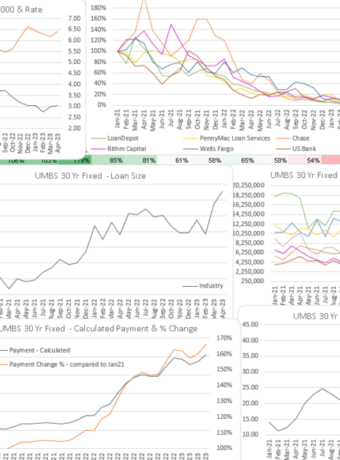With material rapid increases in loan rates, the aggregate monthly volume of new Ginnie Mae (GNMA) insured mortgages decreased by roughly 80% during the study period. Origination volumes of Fannie Mae and Freddie Mac loans in Uniform Mortgage Backed Securities (UMBS) have also been declining at a steep pace. The rate of decline of GNMA originations has been decreasing slower, and the relative share of GNMA insured loans has increased over the months.

While most lenders suffered significant GNMA origination volume reductions, a few fared better than most. For instance, as shown in the next chart, volume of United Wholesale Mortgage GNMA originations actually increased by more than 75% during the study period, while that of others dropped by more than 83% on average. Later charts will show some of the underlying factors.
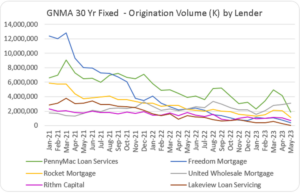
The next two charts show industry origination levels by state. The first shows states experiencing the greatest GNMA related volume declines (exceeding 85%), the second shows those with the least volume declines (ranging between 71-77%).

Similarly, as with loans in UMBS transactions, increasing mortgage rates led to a dramatic shift in the mix of new originations away from refinances to purchase money loans.

The share of first-time homebuyers over the months has increased even more for GNMA related mortgages compared to loans in UMBS securities.
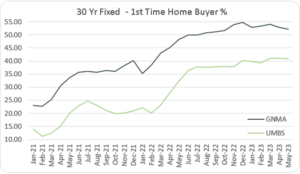
The strength of average LTV, FICO, DTI and other metrics observed in GNMA related loans diminished somewhat as new homebuyers with less-developed credit histories and no prior home equity build-ups became the prominent market-driving group. For instance, the GNMA-related industry metrics changed during the study period as follows:
- 3.5% increase in average mortgage rate,
- $80 thousand increase in average loan balance,
- 12 point drop in average FICO score,
- 3% increase in average LTV ratio,
- 5% increase in DTI ratio,
- 29% increase in 1sttime home buyer share,
- 100% increase in new average loan payment,
The next chart shows the movements of average FICO scores and LTV ratios plotted against each other.
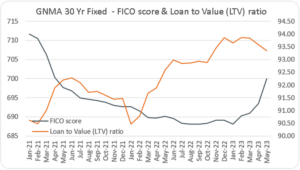
With the increase in mortgage rates, purchase mortgages vs refinances, first-time homebuyer share and average loan size, we see increase in monthly payment amount, debt to income ratio and loan to value ratios.

With higher increase in average loan balances in GNMA insured loans compared to mortgages in UMBS securities, we see even more dramatic increase in monthly payment amounts in new GNMA insured loans than in new loans in UMBS transactions.
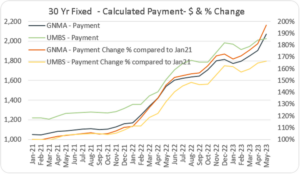
Differences Observed Among States
In the next charts we review for the largest lenders their average loan sizes and the relative percent of each lender’s origination volume each month as compared to January 2021, in the states with biggest declines in originations.
The next set of charts show for the largest lenders changes in their average loan sizes and the relative percent of each lender’s origination volume each month as compared to January 2021, in the states with the smallest declines in origination volume.
The next couple of charts focus on states with the largest loan balance increase during the study period on GNMA insured loans.
Similarly as with mortgages in UMBS securities, among the largest lenders, GNMA insured loan origination state concentration can differ considerably.
The Berkshire Group is a management consulting firm that works with lenders, servicers, issuers, and others in the mortgage loan industry. We maintain proprietary databases and tools for pricing loans and MBS, performing loan file due diligence, evaluating portfolio performance, and scoring loans and MBS for likelihood of prepayment, delinquency, and default. Our clients use the tools for assisting in acquisitions, securitizations, portfolio management, evaluation of loss reserves and capital adequacy, loan buy-back claims, and litigation resolution.
Our agency and non-agency mortgage loan origination and performance databases allow us to monitor changes in loan origination characteristics, as well as analyze in detail the production and portfolios of specific lenders and servicers. Berkshire Group also tracks, analyzes, and incorporates within its pricing tools, historical home prices, unemployment statistics, interest rates, mortgage rates, property taxes, and property maintenance costs.

